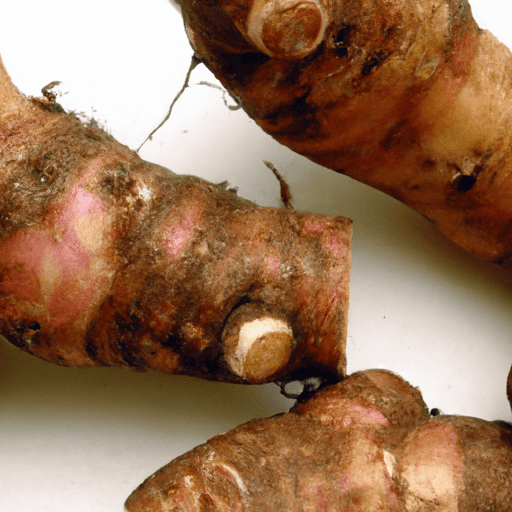Understanding Arrowroot Powder: A Versatile and Nutritious Culinary Essential
When it comes to cooking, there are countless ingredients that can elevate a dish from ordinary to extraordinary. One such ingredient that often goes unnoticed but plays a crucial role in many recipes is arrowroot powder. This fine white powder, derived from the rhizomes of certain tropical plants, has been used in cooking for centuries. In this blog post, we will dive into the world of arrowroot powder, exploring its taste, common uses in cooking, nutritional value, and uncovering some interesting historical and factual tidbits.
A Taste of Arrowroot Powder
Unlike many other starches, arrowroot powder is revered for its neutral taste. It boasts a mild flavor profile, making it an ideal choice for dishes where the primary focus is the natural taste of other ingredients. Unlike cornstarch, arrowroot powder doesn’t impart a starchy or floury taste to dishes but rather works subtly to thicken sauces, gravies, and soups without altering their flavor.
Versatility in the Kitchen
Arrowroot powder is a versatile kitchen staple that finds a place in a wide range of culinary creations. One of its primary uses is as a thickening agent. It has the unique ability to create a smooth and glossy texture when added to liquids, making it a popular choice for thickening sauces, puddings, and custards.
Additionally, this fantastic powder can be used as a gluten-free alternative to wheat flour. It can be incorporated into gluten-free baking recipes to achieve the desired texture and structure. Since it adds a light and delicate touch to baked goods, arrowroot powder is often used in recipes for cakes, cookies, and even breads.
Furthermore, arrowroot powder is valued for its ability to withstand high temperatures without breaking down. This makes it an excellent choice for thickening hot liquids such as soups and sauces without fear of them becoming thin or losing their consistency.
Nutritional Benefits of Arrowroot Powder
Beyond its culinary applications, arrowroot powder also offers some nutritional benefits. It is a good source of potassium, iron, and B vitamins, making it a valuable addition to any well-balanced diet. Furthermore, arrowroot powder is low in calories and fat, making it a suitable substitution for more calorie-dense thickeners like butter or heavy creams.
A Glimpse into History and Fun Facts
Arrowroot powder has a rich history that dates back centuries. It originated in the tropical regions of South America, where indigenous people cultivated arrowroot plants for their nutritious rhizomes. These plants were considered a valuable source of food and were used to treat various ailments due to their believed healing properties.
Interestingly, the name “arrowroot” comes from its historical use in treating wounds inflicted by poisoned arrows. The plant’s rhizomes were ground into a powder and applied to arrow-inflicted wounds, believed to help draw out toxins and aid in the healing process.
In addition to its medicinal uses, arrowroot powder gained popularity among European colonizers in the 18th century as a delicate and healthful ingredient for cooking. Today, it continues to be embraced by chefs and home cooks alike for its versatility and nutritional value.
Conclusion
Arrowroot powder is undoubtedly a hidden gem in the world of cooking. Its neutral taste, versatility in the kitchen, nutritional benefits, and intriguing history make it a valuable addition to any pantry. Whether you are thickening a sauce, baking gluten-free delights, or looking for a nutritious alternative to traditional thickeners, arrowroot powder is here to lend a helping hand. So go ahead, unleash your culinary creativity, and embrace the power of arrowroot powder in your next cooking adventure!
Arrowroot Powder
Origin: Arrowroot powder is derived from the rhizomes of the arrowroot plant (Maranta arundinacea). This herbaceous plant is native to the tropical regions of South America, particularly in the Amazon rainforest. It has been used for centuries by indigenous people for its medicinal properties and as a food source.
Common Uses: Arrowroot powder is a versatile ingredient with various culinary uses. It is often used as a thickening agent in recipes such as soups, sauces, and puddings. Due to its fine texture and neutral flavor, it is sometimes used as a substitute for cornstarch or wheat flour in gluten-free and paleo baking. Additionally, arrowroot powder is used as a binder and stabilizer in food products like ice cream and glazes.
Nutritional Benefits: Arrowroot powder is low in calories and fat. While it is not particularly nutrient-dense, it does contain some beneficial components. It is a good source of carbohydrates, providing energy. Furthermore, it does not contain gluten, making it suitable for individuals with gluten sensitivities or Celiac disease. Arrowroot powder is also known to be gentle on the digestive system, making it a popular choice for those with sensitive stomachs.
Unique Properties: Arrowroot powder has some unique properties that set it apart from other thickening agents. When cooked, it forms a clear, shiny gel, which is particularly desirable in dishes where a translucent appearance is desired. It has a very neutral taste, which allows it to blend seamlessly with other flavors and not overpower the dish. Additionally, arrowroot powder has a higher thickening power compared to wheat flour, meaning that less arrowroot powder is required to achieve the same thickening effect.
Historical Significance: The use of arrowroot dates back centuries. The indigenous people of South America used it not only as a food source but also as a medicinal plant. The name “arrowroot” comes from its historical use in treating wounds caused by poisoned arrows. It was believed that applying a poultice made from arrowroot to a wound would help draw out the poison. Today, arrowroot powder is widely used in culinary applications around the world.




Use the share button below if you liked it.
It makes me smile, when I see it.